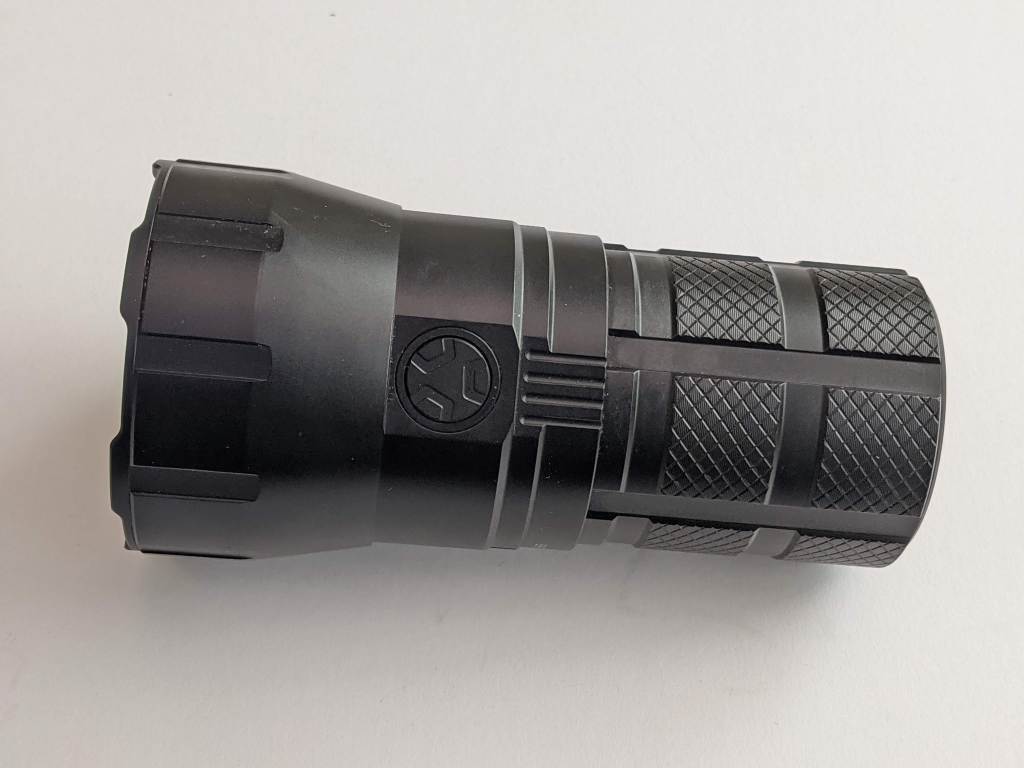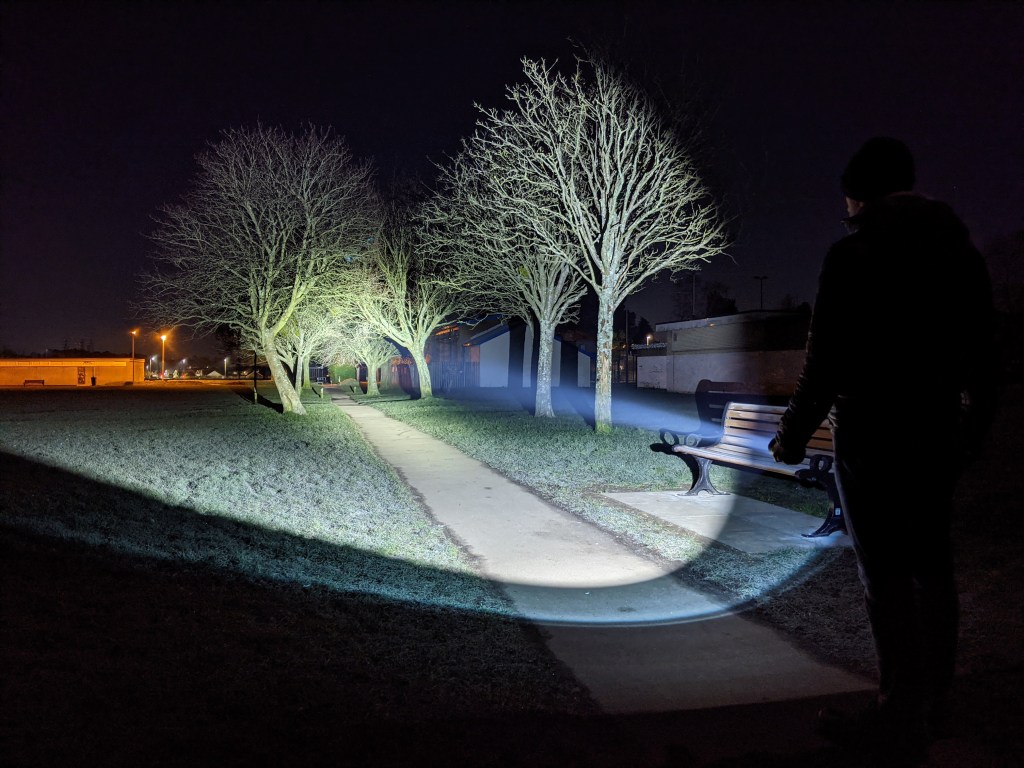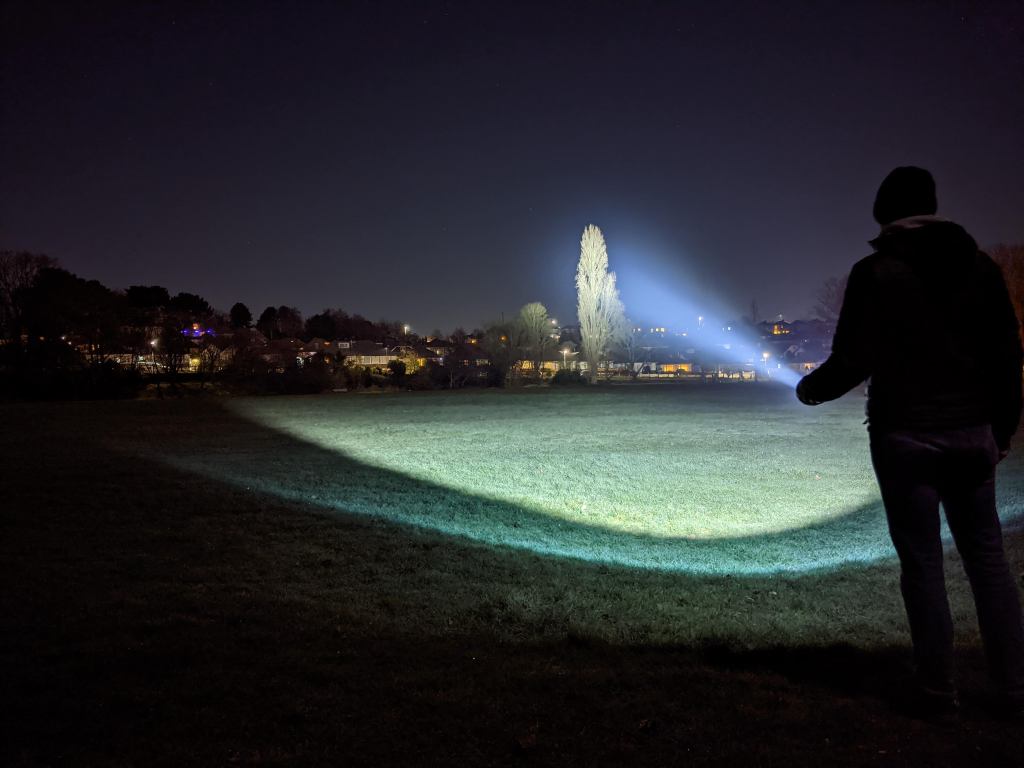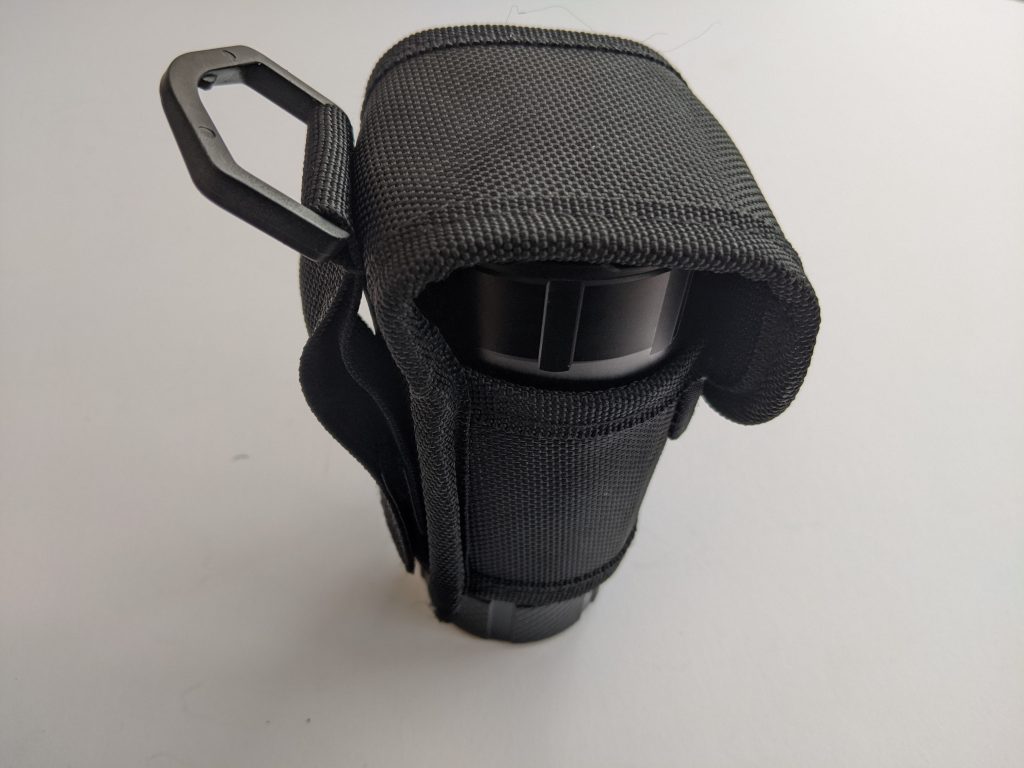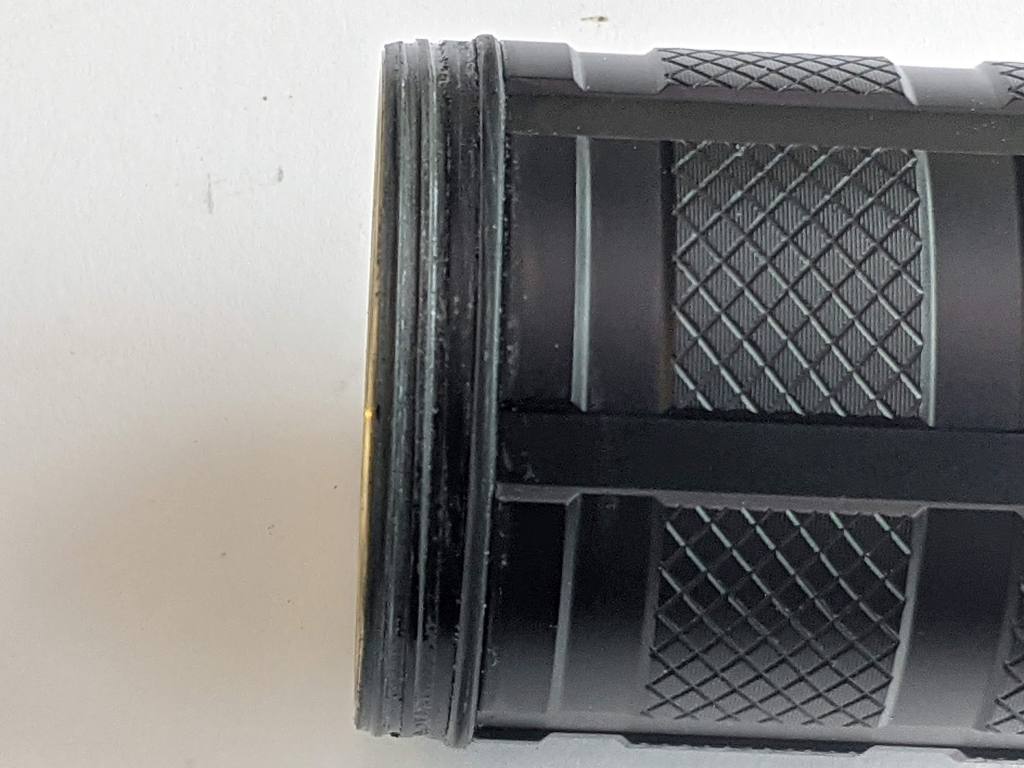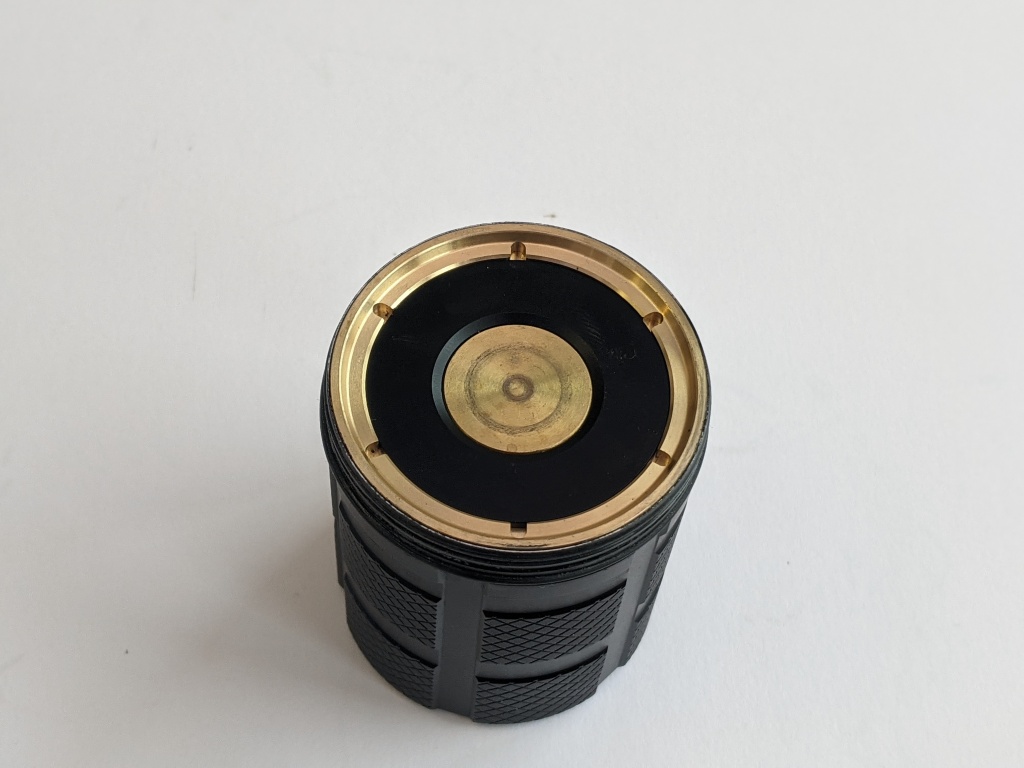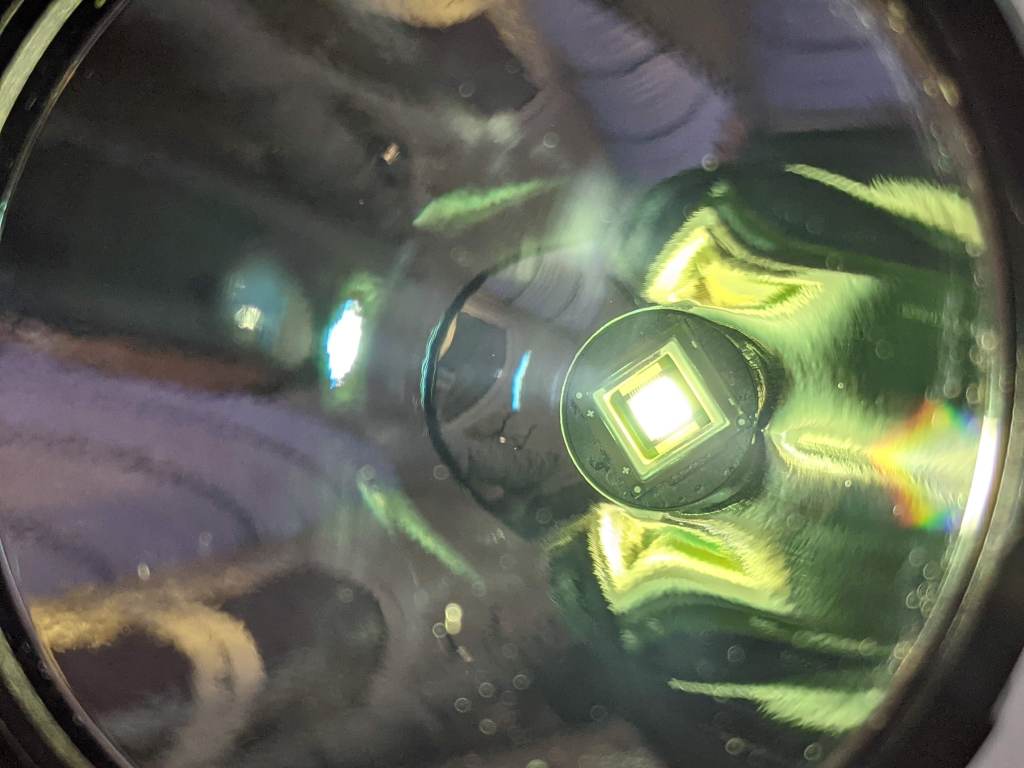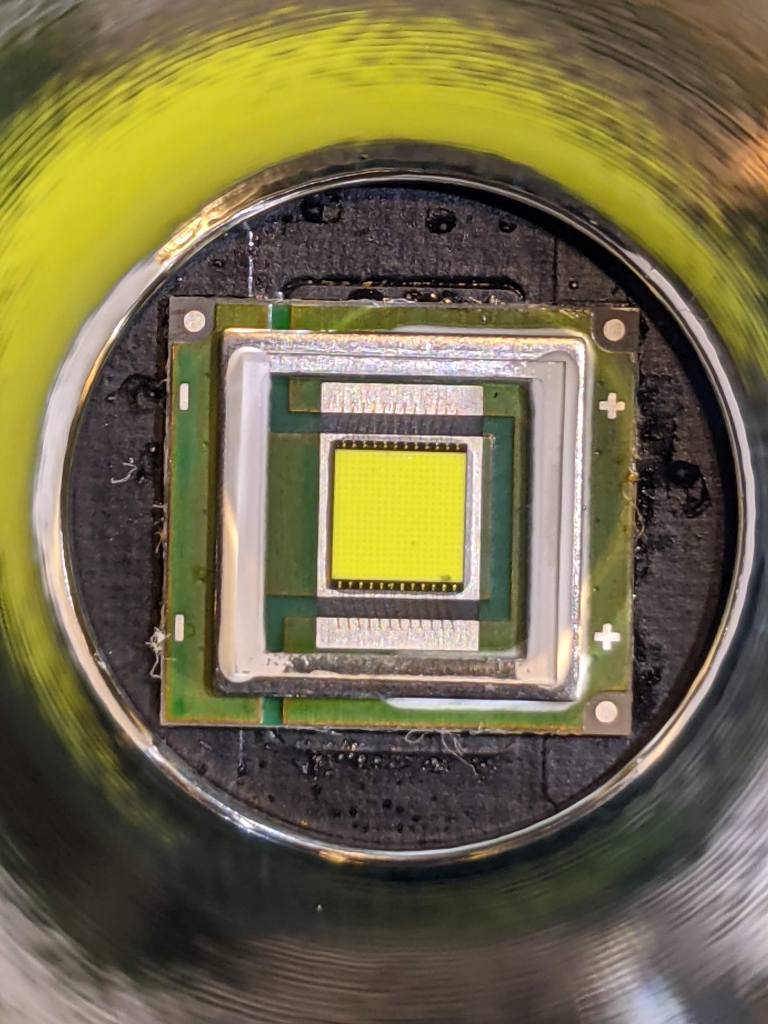Here's a short review of the Imalent RT90 that Imalent kindly provided for review. You can see the full review on my blog. Let me know if you have any questions or comments.
1308m throw, 4800 lumens
Introduction
Imalent are known for their high power and long range flashlights, squeezing in as many lumens and candela as they can. The Imalent RT90 is one of these, designed primarily for high throw, rather than lumens. That said, it still produces almost 5000lm.
Imalent released their RT90 flashlight at the end of 2020, along with their UT90. Both lights have the same LED and similar specs but the RT90 is a soda can size flashlight, rather than the long and thin UT90.
You can buy it direct from Imalent.
Imalent RT90 specs
| LED | Luminus SBT90.2 |
| Lumens | 4800lm |
| Battery | 4 x 1700mAh 18500 cells (6800mAh total battery pack) |
| Material | Aerospace-grade aluminum alloy body,wear-resistant Type III hard-anodized surface treatment |
| Dimensions | 127.5mm length 65mm head 51mm body |
| Weight | 428g (with battery pack) |
| Modes | 5 and strobe |
| Impact resistance | 1.5m |
| Waterproof | IPX-8 standard waterproof (2 meters submersible) |
| Waterproof | N/A |
Box and accessories
The Imalent RT90 comes in a fancy box with reflective lettering and foam insert, similar to the Imalent MS03.
Inside the box, you get:
- Imalent RT90 flashlight
- USB charging cable
- 2 spare O-rings
- Holster
Mine didn’t come with a manual.
Physical size and handling
Size
- Length: 127.5mm
- Head diameter: 65mm
- Body diameter: 51mm
Weight
- With a the battery pack: 428g
The Imalent RT90 is a short, fat soda can style flashlight. Although it has a very deep reflector, thanks to the 18500 cells it’s only 127.5mm long. For reference, the Noctigon K1 is 173mm long. This makes it very easy to slip into a jacket pocket.
The anodising is shiny and makes the RT90 slippery where there isn’t knurling. Fortunately there’s lots of knurling on the body tube, so it’s easy to grip.
The e-switch is almost flush, so may be difficult to find in the dark with gloves. The 2 green indicator lights help with this though. The e-switch is metal and makes a good click. It also rotates freely, so you can use the RT90 as a expensive fiddle toy.
The RT90 tail stands very easily and as it’s a thrower it will ceiling bounce without too much glare.
There’s no lanyard included and no attachment point. I’m planning on attaching some paracord round the body tube, which should stay on thanks to the indentations.
Speaking of the indentations, there’s a few around the bezel and the tail, so the light doesn’t easily roll. This also means it’s much easier to take photos of for reviews!
The battery pack unscrews easily but getting it back on is more of a challenge. You need to compress the thick spring and carefully screw in the very short threads. Fortunately there’s no need to unscrew the battery pack.
LED, Lens, Bezel, and Reflector
The Imalent RT90 comes with the Luminus SBT90.2 LED. This is a high intensity and high power LED, providing almost as much throw as an Osram W1 or Boost HL but with about 7 times the lumens. The SBT90.2 isn’t quite as bright as the CREE XHP70.2 LED that the Imalent MS18 (world’s brightest flashlight) comes with but it does throw much further.
This is my first light with a SBT90.2 LED and I’m very impressed with it.
Imalent don’t mention the CCT but most SBT90.2 LEDs seem to be 6500K, which looks about right compared to other flashlights I have.
The bezel is slightly crenellated so you can see if you left it on when upside down. The bezel appears to be joined to the head. I think you may be able to unscrew the inside of the bezel to get to the lens if you have the right tools.
Driver and user interface
The SBT90.2 LED has a forward voltage of 3.5V, so it can be driven by 1 or more li-ion cells in parallel with a linear driver. Imalent have gone with a 2S2P battery configuration, which provides about 8V. The flashlight has a buck driver to drop this down to the cell’s forward voltage. This results in higher efficiency than a linear driver.
The Imalent RT90 has an e-switch that turns the light on and off and controls the modes.
Basic usage
- click on (mode memory)
- click off
- hold to change modes (low, middle low, middle I, high)
Advanced usage
- Turbo
- Double click from on or off for turbo
- Clicking again always turns off
- Holding from turbo takes you to the mode after the one you were just on, rather than mode memory
- Strobe
- Double click from turbo for strobe
- Low
- Triple click from on or off off for low
- This is then memorised if you turn the light off then on
- Indicator light
- Hold for 2 seconds to toggle the 2 indicator lights
- Lock out
- 4 clicks while off (you have to be quick)
- The indicator light will flash a couple off times, then turn off
Charging
The Imalent RT90 comes with Imalent’s own magnetic USB charging cable. This seems standard across their models now. Whilst the cable on the LD10 was awkward to get a good connection, I’m pleased to say that the RT90 has better magnet placement and the cable sticks first time, every time. It also can’t be stuck on backwards, which is good. Both the cable and RT90 are magnetic.
The RT90 took up to 2.17A from my USB socket.
Measurements
Lux meter: All lux and lumen measurements are from my home made integrating sphere, calibrated with a range of factory specced lights. Measurements are done with a UNI-T UT383S lux meter and Adafruit TSL2591 connected to a Raspberry Pi (using RuTiTe by bmengineer). Expect them to be within +/-10%.
Throw
Throw measured at 5m. I measured the RT90 as coming within 10% of Imalent’s specs, though with measurements closer to 0s, instead of 30s.
| Mode | Candela | Throw |
| Low | 1106 cd | 67m |
| Middle low | 37 kcd | 383m |
| Middle | 107 kcd | 655m |
| High | 260 kcd | 1019m |
| Turbo | 380 kcd | 1233m |
Beamshots
Distance to the far building is 55m. Photos were taken with a Pixel 3a, set to 1/2s shutter speed and ISO 400, F1.8.
Unfortunately I set my camera settings for lower power lights. The RT90 has so much more throw that the hotspot is completely washed out.
The closest light I have to the Imalent RT90 is my Astrolux FT03 with XHP50.2, which is about 4000lm and throws half the distance of the RT90! Before the RT90, my furthest throwing light was the Convoy Z1 with W2: this throws almost 1km but with a fine pencil beam. The RT90 throws further and lights up a wide area too.
-
 Astrolux FT03 (735m)
Astrolux FT03 (735m)
-
 Convoy M3-C (365m)
Convoy M3-C (365m)
-
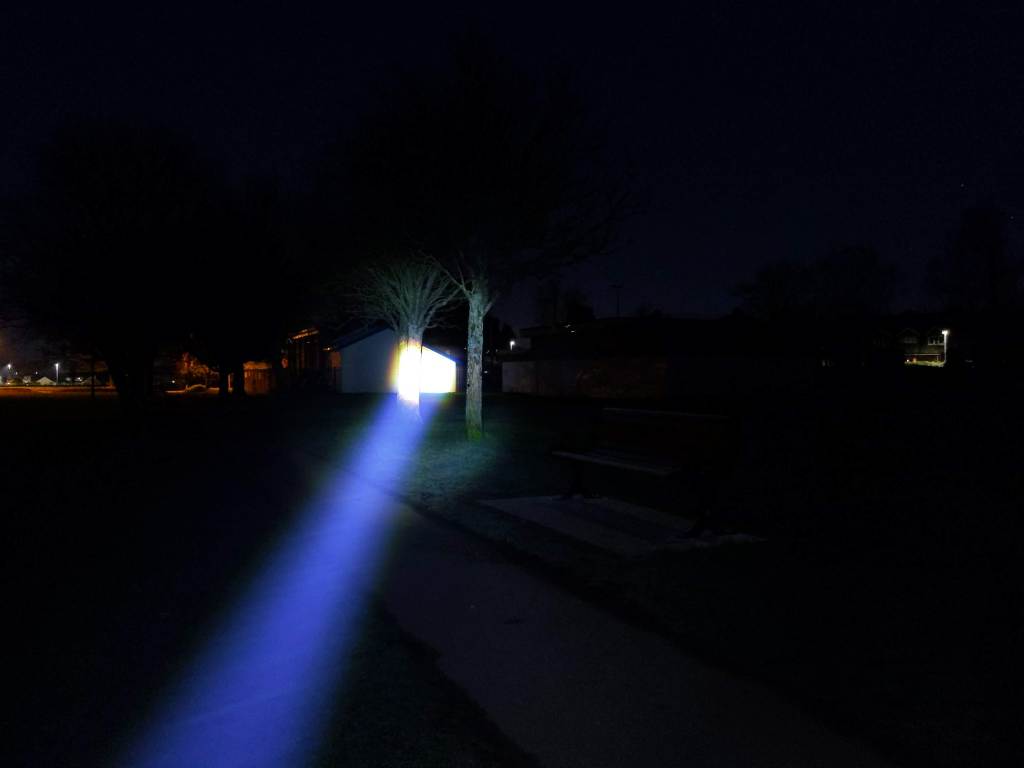 Convoy Z1 (950m)
Convoy Z1 (950m)
-
 Nightwatch NSX3 (333m)
Nightwatch NSX3 (333m)
-
 Sofirn SP36 (352m)
Sofirn SP36 (352m)
-
 Imalent RT90 (1308m)
Imalent RT90 (1308m)
Summary
Pros
- Well over 1km of throw on turbo
- Sustains over 600m throw for an hour and a half
- Easily fits in a jacket pocket
- Magnetic charging is improved over previous models
Cons
- Small for a mega thrower, so heats up and steps down fast
- 18500 cell battery pack has lower energy density than 18650 cells
Conclusion
The Imalent RT90 is the furthest throwing flashlight I own and it does that in a small form factor. It’s probably the shortest light you can get that throws over 1km. Very impressive.
Its size, coupled with the SBT90.2 LED means that it gets hot faster than a bigger light like the Imalent RT35. As well as throwing further, it’s also much brighter than any of the Osram throwers I have.
The use of 18500 cells in the batter pack instead of 18650 (or 21700) is an interesting choice. They make the light quite a bit shorter but for a bit more length Imalent could have doubled the capacity.
Imalent also sell the UT90, which is the same LED and reflector in a more “tactical” shaped body and 21700 cells in the battery pack. If soda can flashlights aren’t your thing then check that out.
This flashlight was sent to me for review at no cost by Imalent. I have not been paid to review, nor have I been holding back on problems or defects.
